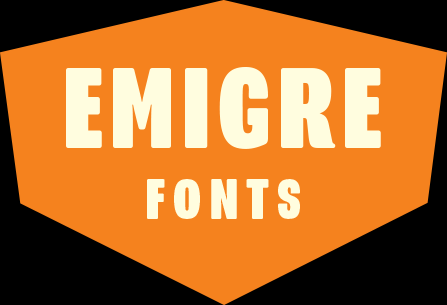Impact 2.0: Design magazines, journals and periodicals, 1974-2016 (UK)
Interview by Adrian Shaughnessy. Published by Unit Editions in 2016.
Adrian Shaughnessy: Emigre played a crucial role in establishing the notion that designers could be more than just a publications layout person. Emigre proved that designers could also be editors and publishers. Was this your intention when you started Emigre?
Rudy VanderLans: Not consciously. But as a designer I quickly realized that you hold many keys to publishing a magazine. Design is a crucial component of the publishing process. Then, as I worked all kinds of design odd jobs, for various publishers and other entrepreneurs, and looked behind the scenes, I often found that what my clients did to put out their products wasn’t exactly rocket science. It just took a lot of guts and hard work and money and perseverance. At some point I must have thought that I could do that myself. So instead of being a cog in the machine, I could be the machine. And I always felt attracted to designers who took on the challenges and responsibilities to put out their own products. I was very intrigued by the entire process of publishing, not just the design of a cover, or a layout, but also the manufacturing, distribution, financing, advertising; all the aspects of publishing necessary to put ideas out in the world. And we were doing this in an era that was rich with a DIY attitude. It was the halcyon days of small independent record labels, small independent distributors, and small independent publishers. Designers are very resourceful, they are good at problem solving, they’re natural editors, and they’re curious. It’s a perfect fit for putting out your own products.
AS: Emigre is often cited as the first design publication of the computerized era in design. What role did computerization play in the evolution of Emigre?
RvdL: The most immediate impact of computerization for us was on the cost of typesetting. Up to the point of the Mac, we either used professional photo typesetting services, which was far beyond our non-existing budget, or we used typewriters, Letraset, and cut-and-paste to set your texts. With the Mac we could make our own fonts. Granted, they were coarse resolution bitmap fonts, and many designers thought they looked hideous. But to us it was a way to save money on typesetting, and as an added bonus we were able to differentiate ourselves from every other magazine simply because of those curious never-before-seen typefaces that we used.
The first time we used the Mac for Emigre, in 1985, there were no page layout programs, Postscript and Laser printers didn’t even exist yet. We printed out low resolution type on an Image writer on paper as big as we could, and then we reduced the type using a stat camera and pasted it down on boards. It was a slow and gradual transition from manual paste-up to full computerization. It wasn’t until ten years later, probably around 1996 that we did our first issue where layouts and prepress, including images, was done entirely digitally.
As the computer became more sophisticated, so did our typefaces, and before too long requests were coming in from designers asking if they could purchase the fonts that we were using in Emigre magazine. That’s how the Emigre Fonts foundry came about. We initially sold typesetting to designers using our fonts. Then later we started selling the fonts on floppy disks. The sales of those typefaces is what largely supported the publishing of Emigre magazine. And then, when the internet came along, we couldn’t believe our luck. We had a successful digital product that we could now sell on-line. So now, the computer was the machine that we used to design, manufacture, and distribute our product. So in terms of the evolution of our business, the computer had an impact on how we designed, but much more significantly, it was central to how we operated as a business.
AS: What publications did you regard as role models when you started out in 1984?
RvdL: When we started Emigre there was a plethora of independently published magazines. A trip to Printed Matter in New York in those days was always like a treasure hunt for independently published magazines. There are too many to mention. I remember closely studying 4 Taxis (France), I loved RAW, and I still have copies of WET magazine. But it was Hard Werken that inspired me the most. I tried to mimic that best I could without looking like a complete copycat.
AS: How do you view the current publication landscape regarding graphic design writing and critical engagement?
RvdL: I’m always searching, but I find it’s slim pickins. I’m impressed with Slanted (Germany), Azimuth (France), and Idea magazine (Japan) continues to impress me, although the latter is almost entirely a visual treat for me. Lately, I found the most interesting writing on design in exhibition catalogs, like Andrew Baluvelt and Ellen Lupton’s Graphic Design: Now in Production or Jon Sueda’s exhibition catalogs such as All Possible Futures. There may be other great writing out there, but I don’t know where it’s hiding. In general I’m at a loss knowing what the prevailing conversations within design are about these days. There used to be a time when someone like Steven Heller could write an article about “Ugly” design and there’d be a firestorm that lasted for years. It’s been a while since I’ve seen anything like that.
AS: A favorite Emigre cover and a favorite non-Emigre design magazine cover?
RvdL: That’s always difficult, but I do still like the cover of Emigre #1. Runner up would be Emigre #24.
My favorite non-Emigre cover, for a design magazine – probably Wolfgang Weingart’s covers for Typographische Monatsblätter.


